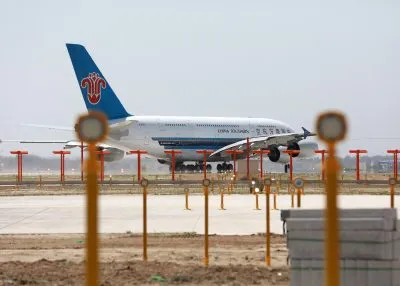Stroll down the Westlands suburb of Nairobi and you would be hard pressed to decide whether it is a commercial or residential district since ostentatious skyscrapers stand alongside Victorian town houses.It is the ultimate paradox in a capital city where informal settlements border affluent neighbourhoods, and droves of cattle share the busy Mombasa-Nairobi highway with 4WD vehicles. The visual incongruence is the outcome of a property boom that hit the country in 2002 and which has seen commercial and residential properties mushroom on every street corner.
Industry pundits predicted in 2011 that the property bubble would burst but Kenya continues to ride the wave. The value of approved home plans in Nairobi increased by 115% in the first half of this year, according to the Kenya National Bureau of Statistics (KeNBS), and data indicates that approved residential building plans increased from KSh23.7bn ($277m) in the first half of 2012 to KSh51bn ($596m) in Q1 2013.
Riding on the sector’s coat tails, Kenya’s cement manufacturers reported strong profits in 2012/13 and the Nairobi Stock Exchange (NSE) listed East Africa Portland Cement turned a FY2012 loss of KSh969m ($11m) into an impressive KSh2bn ($23m) profit.
Muammar Ismaily, Head of Research at investment house Genghis Capital, said, “The construction segment has been amongst the best performers in the NSE year to date,” adding that cement consumption in Kenya had grown at 15% over the last five years, significantly faster than the 13% East African average.
Bump in the road
However, the City Council of Nairobi did experience a 30% drop in the number of registered developments from 682 projects in Q4 2012 to 523 in Q2 2013.
“There is some hesitancy by investors around the nation’s political future and stability. At the same time, pressures such as the broader imposition of VAT have impacted the middle and lower market, and business generally,” said Sakina Hassanali, Head of Marketing and Research at property research company Hass Consult.
More intriguing is the drop in the value of approved projects which fell from KSh73bn ($853m) to KSh25.9bn ($302m) over the same period. Robyn Emerson, CEO of Kenya Property Developers Association, says it suggests a turn from the upper class to the middle and low-end market. Looking around the capital, it is undoubtedly the middle-class apartment blocks which define the city and the outer areas of Mlolongo and Thika.
Currently, there are only 20,000 mortgages in a market of over 40m people, according to Carol Kariuki, managing director of The Mortgage Company. She attributes this to unresponsive mortgage rates which have remained static at an average of 16.96% in the third quarter.
It is however the master plan development projects – gargantuan schemes like Konza City near Machakos, Tatu City in Kiambu, and Garden City in Thika – which continue to catch the world’s attention.
While Tatu and Konza city monopolised media headlines in the past two years, Garden City is today’s prize. Located on a 32-acre plot adjacent to the recently completed Thika superhighway, it is a development by private equity company Actis, which will comprise retail, leisure and residential segments. When it opens in 2014, it is expected to be the largest mall in Kenya and home to over 100 retail brands.
“These self-containing projects will decongest Nairobi and move development to the outlying areas,” KPDA’s Emerson said. She is particularly excited by the example it sets for public-private partnerships.

Urban strategies
As the private sector invests billions into estates, the government is working to meet Vision 2030 housing objectives. Nearly half the city’s population lives in Nairobi’s slums, which are some of the most dense, insanitary and insecure in the world.
In 2009, the Kibera slum clearance project was initiated when residents were rehoused in 300 newly built apartments. Three years later, President Kibaki launched a KSh3bn ($35m) Kibera Peoples Settlement Development, which involved the construction of 912 housing units and various support structures like business stalls, a school and a youth centre.
In 2012, the KSh200m ($2.3m) Korogocho Slum Upgrading Programme targeted rehabilitating roads, rivers and recreational spaces in the area.
These initiatives took place parallel to housing units for civil servants, championed by the National Housing Corporation. According to the Vision 2030 website, the Corporation has already developed 800 urban units and over KSh820m ($9.6m) has been advanced to facilitate the improvement of rural housing.
Government’s infrastructure overhaul – which includes urban highways and bridges, trade corridors, airport and railway upgrades ,and modern port facilities in Mombasa and Lamu – supports public and private projects.
But all these clusters of development are making city planners anxious and so the public and private sector have joined hands to check urban sprawl.
Nairobi’s Eastlands area, for instance, is set to be redeveloped as a mini city within a city as part of a new master plan that will serve as a template for other urban nodes.
This is one of the initiatives that the KPDA is working on as it tries to make sense of the country’s incongruent infrastructure development. Nairobi’s previous master plan, drawn up in 1973, expired 13 years ago and the new KSh300m ($3.5m) plan, viable for the next 17 years, is being funded by the Japan International Co-operation Agency.
“We need to think beyond just zoning if the current growth vision is to work. We are now looking at an integrated physical, social and economic system,” said Tom Odongo, Nairobi County Cabinet member for Lands, Physical Planning and Housing.
Counting on the counties
Despite these challenges, the local construction sector is optimistic. Mukesh Halai, a director at Parbat Siyani, one of the top construction companies, said, “The industry is still booming. Developments are still coming up,” and he is hopeful that the demands of the mining and oil sector will reverse any downturn.
Developers at the south coast where titanium, niobium and rare earth minerals were discovered, are capitalising on the shortage of housing for staff and visitors. Land in Kwale, where the Base Titanium project is located, has appreciated between 100% and 200% in the last five years.
The devolution of the counties also holds promise. Research analyst Ismaily said, “With the current devolved government and KSh210bn ($2.5bn) unlocked for county expenditure and facilitation, infrastructure remains a likely avenue for channelling funds to the dilapidated state of most roads that must be mitigated to attract foreign investment necessary for county development.”
The counties have also kick-started marketing campaigns. Embu, for instance, attracted a commitment of KSh441bn ($5bn) at its inaugural investment conference in October, much of which has been earmarked for building factories, hotels and medical institutions.
International investors are also positive about the prosperity of the sector. India’s richest businessman Mukesh Ambani recently acquired 10 prime plots in Nairobi’s Westlands and Upper Hill areas valued at KSh2.9bn ($33.9m).
South African companies do not intend to be left behind, and the Johannesburg Stock Exchange-listed Distribution & Warehousing Network (DAWN), which manufactures construction products, is setting up shop in Nairobi in January 2014. It joins Sanlam and Stanlib, who have announced plans to invest KSh10bn ($116.9m) in the Kenyan real estate sector. The greatest challenge Halai foresees, however, is the Chinese foothold in the market.
“Kenyan companies are suffering hugely,” he said, noting that the Chinese now handle roads and property schemes in the government and private sector. The contract for Garden City, for example, he explained, was for Sh5bn ($57m) but the two lowest bidders, at KSh 3.8bn ($44m) and KSh4.8bn ($56m), were both Chinese, leaving no space for local companies to compete.
“Most local companies are going into middle-scale projects because with the bigger ones, the Chinese are always there,” he said. This year alone, China Wu Yi and China Jiangxi International secured tenders for multibillion private projects including
Hazina Trade Centre, which will be the tallest building in Nairobi.
There is no doubt that Kenya’s real estate sector is continuing to flourish. The issue now perhaps is that if a bubble is going to burst, it will be about the leading players in the construction sector. Not the sector itself.
Aamera Jiwaji
Want to continue reading? Subscribe today.
You've read all your free articles for this month! Subscribe now to enjoy full access to our content.
Digital Monthly
£8.00 / month
Receive full unlimited access to our articles, opinions, podcasts and more.
Digital Yearly
£70.00 / year
Our best value offer - save £26 and gain access to all of our digital content for an entire year!

 Sign in with Google
Sign in with Google 





